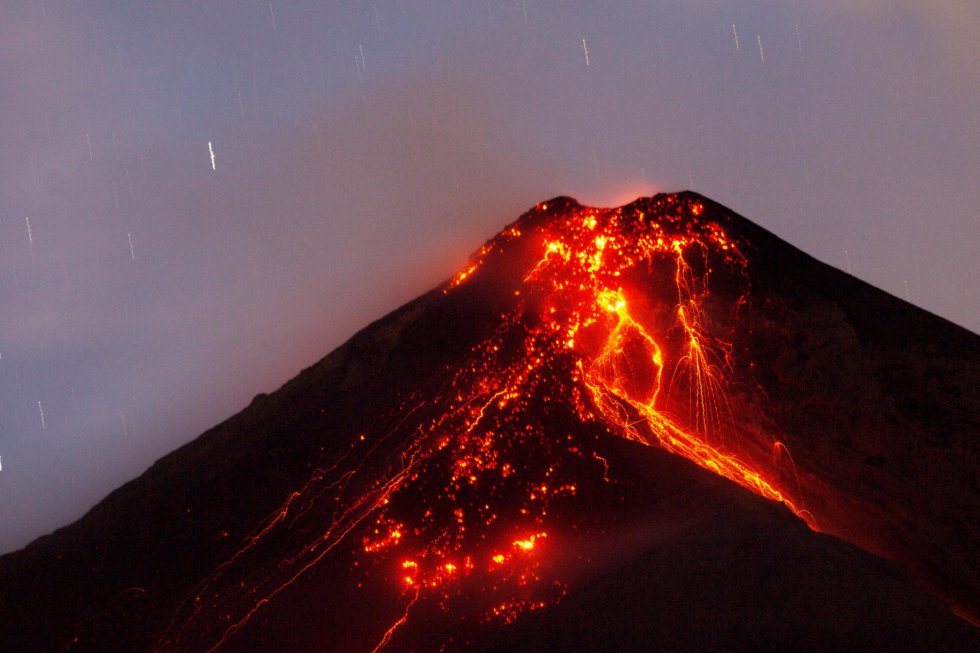RIO DE JANEIRO, BRAZIL – The Fuego volcano, the most active volcano in Central America and located about 45 kilometers west of the Guatemalan capital, began a new eruption on Thursday, producing large columns of ash and pyroclastic flows, authorities reported.
According to the National Institute of Seismology, Volcanology, Meteorology, and Hydrology (Insivumeh), the flow of the colossus of 3,763 meters above sea level and located between the departments of Escuintla, Sacatepéquez, and Chimaltenango, has already moved about 6 kilometers and reached the base of the volcano.
Read also: Check out our coverage on Guatemala
The scientific body warned that the descent of the incandescent material would continue as long as the lava effusion continues in this eruption.

According to authorities, the cloud generated by the pyroclastic flow may produce ashfall in the communities located in the south and southwest flanks of the volcano and affect air traffic in its surroundings.
Insivumeh recommended that the National Coordinator for Disaster Reduction (Conred) increase the alert level and adopt the necessary measures, especially in the communities near the Ceniza, Taniluyá, and Trinidad ravines.
The spokesman of the civil protection institution, David de León, explained that the Volcano Prevention Unit of the three departments where the colossus is located is monitoring the evolution of the activity and that evacuations have not been necessary yet.
The relief corps and firefighters are also on alert in the region if it is necessary to evacuate the communities located on the slopes of the volcano if the eruptive pattern changes.
The ash column of the volcano can be observed from several points of the Guatemalan capital. The cone also registers shock waves and descent of moderate to solid avalanches towards the Ceniza, Trinidad, Tanuluyá, Santa Teresa, and Las Lajas ravines.
According to Insivumeh, rumblings in the volcano are noticeable at least 10 kilometers around the volcano.
Fuego volcano is one of the three most active of the 32 volcanoes in Guatemala. The other two are the Pacaya and Santiaguito volcanoes, located in the south and west of the country, respectively.
The last major volcano eruption in Guatemala was on June 3, 2018, when the Fuego volcano took the lives of 431 people living in its surroundings, although it has remained in constant activity.

